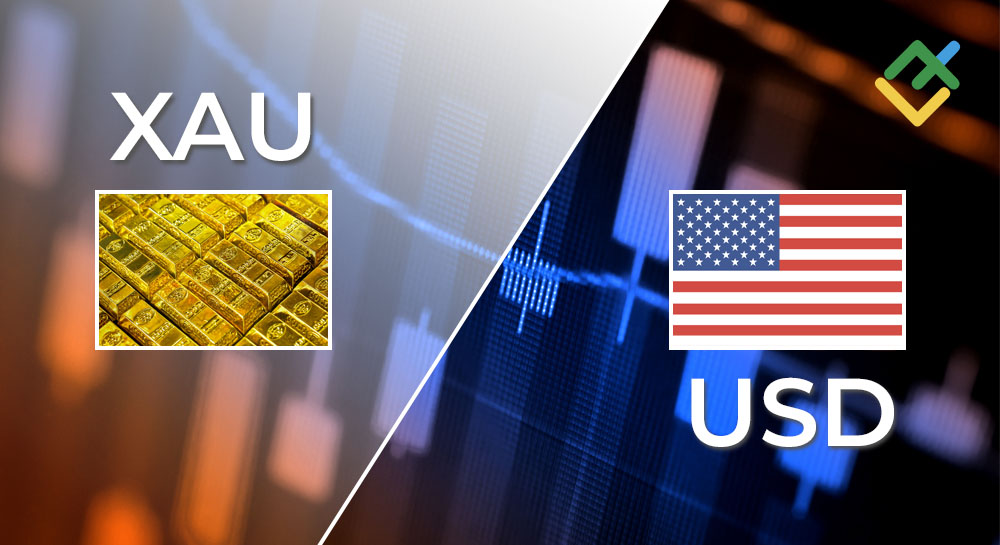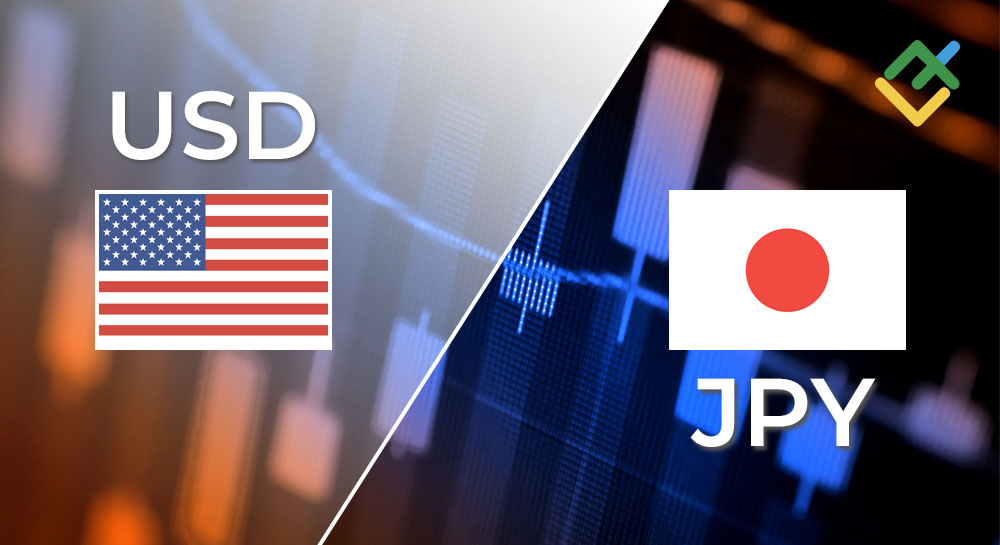
Donald Trump, who took office as the US president last week, made his first decrees that left market participants feeling discouraged. His executive order imposing a 25% import duty on oil from Canada and Mexico, starting February 1, was expected to boost oil prices but instead led to a decline. Additionally, his executive order to expand offshore oil production along the US coast and in the Arctic region had a similar effect on prices. Trump also reaffirmed his goal to end the war in Ukraine, acknowledging Russia’s demands for NATO’s eastward expansion.
Markets are gradually calming down after last week’s events in the US, and the US dollar is again rising. In the upcoming week, 27.01.2025 – 02.02.2025, market participants will focus on the publication of important macro statistics on China, Australia, Germany, the eurozone, the US, and Japan, as well as the results of the ECB, the Fed, and the Bank of Canada meetings.
Note: During the coming week, new events may be added to the calendar, and/or some scheduled events may be canceled. GMT time
The article covers the following subjects:
Major Takeaways
- Monday: China’s core PMIs.
- Tuesday: US Conference Board Consumer Confidence Index.
- Wednesday: Bank of Canada and US Fed meetings.
- Thursday: European Central Bank meeting, preliminary US GDP for Q4.
- Friday: German CPIs, US PCE index.
- The key event of the week: US Fed meeting.
Monday, January 27
01:30 – CNY: China’s Manufacturing and Services PMI by the China Federation of Logistics and Purchasing (CFLP)
This indicator is an essential gauge of the overall Chinese economy. An indicator reading above 50 is positive for the yuan, while a value below 50 is negative for the currency.
Previous values: 50.1 (December 2024), 50.3, 50.1, 49.8, 49.1, 49.4, 49.5, 50.4, 50.8, 49.2, 49.0, 49.5, 50.2, 49.3, 49.0, 48.8, 49.2, 51.9, 52.6, 50.1 in January. The relative rise in the index above 50 strengthens the yuan. Data above 50 indicates increased economic activity, positively affecting the national currency. Conversely, if the index value is below 50, the yuan will face pressure and probably decline.
Likewise, the services sector PMI assesses the state of the services sector in the Chinese economy. An indicator result above 50 is seen as positive for the yuan. Previous values: 50.2 (December 2024), 50.0, 50.2, 50.0, 50.3, 50.2, 50.5, 51.2, 53.0, 50.7, 50.4, 50.6, 51.7, 51.5, 53.2, 54.5, 56.4, 58.2, 56.3, 54.4 in January. Despite the relative decline, the indicator is still above the 50 value, likely influencing the yuan positively. Conversely, the indicator below 50 suggests that the yuan will face pressure and probably decline.
Tuesday, January 28
Chinese markets and banks will be closed due to Chinese New Year’s Eve celebrations. Trading volumes, especially during the Asian trading session, will be lower than usual.
09:00 – EUR: Euro Area Bank Lending Survey
A survey of the bank lending system conducted by EU experts in the financial sector is carried out four times a year. The primary goal of the survey is to gather comprehensive information about the conditions of bank lending in the eurozone.
The ECB officials use this data when making decisions on the bank’s monetary policy. This report may cause increased volatility in the euro and European stock market quotes upon its release if it contains unexpected conclusions regarding lending conditions for businesses and households in the eurozone.
15:00 – USD: Consumer Confidence Index
A Conference Board’s survey of nearly 3,000 US households evaluates current and future economic conditions and overall economic sentiment. Consumer confidence in the country’s economic development and stability is a key indicator of consumer spending and, consequently, economic performance. High confidence levels suggest economic growth, while low levels indicate stagnation.
Previous indicator values: 104.7 (December 2024), 111.7, 108.7, 98.7, 103.3, 100.3, 100.4, 102.0, 97.0, 104.7, 106.7, 114.8, 110.7, 102.0, 102.6, 103.0, 106.1, 117.0, 109.7, 102.3, 101.3, 104.2.
The increase in the indicator values will bolster the US dollar exchange rate, while the decrease will weaken it.
Wednesday, January 29
Chinese markets and banks will be closed due to Chinese New Year celebrations. Trading volumes, especially during the Asian trading session, will be lower than usual.
00:30 – AUD: Australia Trimmed Mean Inflation Rate for Q4. Consumer Price Index for Q4 and December.
The trimmed mean measure of core inflation in Australia is published by the Reserve Bank of Australia and the Australian Bureau of Statistics. It reflects the retail price of goods and services included in the consumer basket. The trimmed mean takes into account the weighted average of the middle 70% of index components. Previous values: +0.8% (+3.5% YoY) in Q3 2024, +0.8% (+3.9% YoY) in Q2 2024, +1.0% (+4.0% YoY) in Q1 2024, +0.8% (+4.2% YoY) in Q4 2023, +1.2% (+5.5% YoY) in Q3, +1.0% (+5.9% YoY) in Q2, +1.2% (+6.6% YoY) in Q1 2023, +1.7% (+6.9% YoY) in Q4 2022, +1.8% (+6.1% YoY) in Q3, +1.5% (+4.9% YoY) in Q2 2022, +1.4% (+3.7% YoY) in Q1 2022, +1.0% (+2.6% YoY) in Q4, +0.7% (+2.1% YoY) in Q3, +0.5% (+1.6% YoY) in Q2, +0.3% (+1.1% YoY) in Q1 2021.
The data suggests that inflationary pressures remain robust. If the indicator reading turns out to be worse than expected, the Australian dollar will likely weaken. Conversely, if the indicator value exceeds the forecast, it may positively impact the currency in the short term.
The Consumer Price Inflation Index, published by the Reserve Bank of Australia and the Australian Bureau of Statistics, gauges retail prices of goods and services in Australia. The CPI is the most significant indicator of inflation and changes in consumer preferences. A high indicator reading is positive for the Australian dollar, while a low reading is negative. Previous indicator values: +0.2% (+2.8% YoY) in Q3 2024, +2.3% in November, +2.1% in October and September, +2.7% in August and +1.0% (+3.8% YoY) in Q2 2024, +1.0% (+3.6% YoY) in Q1 2024, +0.6% (+3.4% YoY) in Q4 2023, +1.2% (+5.4% YoY) in Q3, +0.8% (+6.0% YoY) in Q2, +1.4% (+7.0% YoY) in Q1 2023, +1.9% (+7.8% YoY) in Q4 2022, +1.8% (+7.3% YoY) in Q3, +1.8% (+6.1% YoY) in Q2 2022, +2.1% (+5.1% YoY) in Q1 2022, +1.3% (+3.5% YoY) in Q4, +0.8% (+3.0% YoY) in Q3, +0.8% (+3.8% YoY) in Q2, +0.6% (+1.1% YoY) in Q1 2021.
The Australian central bank’s CPI inflation target ranges between 2% and 3%. According to the minutes of a recent RBA Board meeting, the bank may need to increase interest rates over time to bring inflation back to the target range and take further measures in the coming months to stabilize monetary conditions in Australia.
Now, the RBA, like most of the world’s other major central banks, is facing persistently high inflation.
The expected positive CPI reading will likely strengthen the Australian dollar. If the indicator readings are worse than the forecast or the previous value, the Australian dollar will face short-term negative effects.
14:45 – CAD: Bank of Canada Interest Rate Decision and Accompanying Statement
At its 2022 and 2023 meetings, the Bank of Canada raised its interest rate and advocated for further increases. Since its September 2023 meeting, Canadian policymakers have held the interest rate at 5.00%, assuming that uncertainty caused by high geopolitical tensions around the world and slowing Chinese, American, and European economies will be accompanied by lower demand for oil. As oil is Canada’s primary export commodity, this situation may weaken its economic growth while grappling with high inflation.
However, at the June 05, 2024 meeting, the Bank of Canada reduced the interest rate by 0.25% to 4.75% and then to the current 3.75% in December, resulting in a total cut of 1.75% (175 bps) for 2024.
The central bank’s upcoming decision remains uncertain. The regulator may also take a pause at Wednesday’s meeting.
If the Bank of Canada’s accompanying statement regarding growing inflation and the prospects for further monetary policy signals further tightening, the Canadian dollar will strengthen. Conversely, if the regulator signals the need for a monetary policy easing, the Canadian currency will decline.
15:30 – CAD: Bank of Canada Press Conference
During the press conference, Bank of Canada Governor Tiff Macklem will provide an overview of the bank’s position and assess the current economic situation in the country. If the tone of his speech is tough regarding the Bank of Canada’s monetary policy, the Canadian dollar will strengthen. If Tiff Macklem is in favor of maintaining a soft monetary policy, the Canadian currency will decline. Anyway, the Canadian dollar is expected to be highly volatile during his speech.
19:00 – USD: US Fed Interest Rate Decision. Fed Commentary on Monetary Policy
During the first half of 2024, the US Fed policymakers left monetary policy parameters unchanged at multiple meetings, maintaining the key interest rate at 5.50%. However, at the September, November and December meetings, the US Fed’s leaders reduced the interest rate to the current 4.50% and did not rule out further reductions. Notably, a month before these decisions, US Fed Chairman Jerome Powell stated that the US central bank’s focus was shifting toward ensuring stability in the labor market. However, Powell emphasized that any decisions regarding interest rates would still hinge on the prevailing economic conditions.
Now, market participants expect the US central bank to continue its monetary easing cycle. Nevertheless, there is also a possibility of an interest rate hike if inflation starts to rise again, as Fed Chairman Jerome Powell has repeatedly warned earlier.
It is widely anticipated that the rate will remain unchanged at 4.50% at the upcoming meeting.
The financial market may experience higher volatility when the rate decision is announced, particularly in the US stock market and the US dollar, especially if the rate decision does not match the forecast or the Fed makes unexpected statements.
Powell’s commentaries may affect short-term and long-term trading in the US dollar. The Fed’s more aggressive approach to monetary policy is a positive factor that would strengthen the US dollar, while a more cautious position is negative for the greenback. Investors are eagerly awaiting Powell’s remarks on the Fed’s upcoming plans for this year and the next.
19:30 – USD: US Federal Reserve Open Market Committee Press Conference
The US Federal Reserve Open Market Committee (FOMC) press conference lasts approximately one hour. The resolution is read in the first part of the meeting, followed by a Q&A session, which may increase market volatility. Any unexpected statements by Jerome Powell on the Fed’s monetary policy will cause a hike in volatility in the US dollar and the US stock market.
Thursday, January 30
07:00 – EUR: German GDP for Q4 (Preliminary Estimate)
The GDP data is one of the key data (along with labor market and inflation data) for a country’s central bank in terms of its monetary policy. A strong result boosts the euro, while a weak GDP report negatively affects the currency. In Q3 2024, GDP increased by +0.1% (+0.1% YoY), following -0.1% (+0.3% YoY) in Q2, +0.2% (-0.9% YoY) in Q1, -0.3% (-0.4% YoY) in Q4 2023, -0.1% (-0.8% YoY) in Q3 2023.
If the GDP decreases in Q4 2024, the euro will face pressure. Conversely, positive GDP data will support the currency.
10:00 – EUR: Eurozone GDP for Q4 (Preliminary Estimate)
GDP is considered to be an indicator of the overall economic health. A rising trend of the GDP indicator is positive for the euro, while a low reading weakens the currency.
Recent eurozone macro data has shown a gradual recovery in the growth rate of the European economy after a sharp decline in early 2020.
Previous values: +0.4% (+0.9% YoY) in Q3, +0.2% (+0.6% YoY) in Q2, +0.3% (+0.4% YoY) in Q1 2024, 0% (+0.1% YoY) in Q4 2023, -0.1% (0% YoY) in Q3, +0.1% (+0.5% YoY) in Q2, -0.1% (+1.0% YoY) in Q1 2023, 0% (+1.9% YoY) in Q4 2022, +0.7% (+4,0% YoY) in Q3, +0.8% (+4.1% YoY) in Q4 2022, +0.7% (+4,6% YoY) in Q3, +2.2% (+3.9% YoY) in Q3, +2.2% (+14.3% YoY) in Q2, and -0.3% (-1.3% YoY) in Q1 2021.
If the data is below the forecasted and/or previous values, the euro may decline. Conversely, readings exceeding the predicted values may strengthen the euro in the short term. However, the European economy is still far from fully recovering even to pre-crisis levels.
13:15 – EUR: European Central Bank’s Interest Rate Decision. ECB Monetary Policy Statement
The European Central Bank will publish its decision on the main refinancing operations and the deposit facility rates, which currently stand at 3.15% and 3.00%, respectively.
The ECB’s tight stance on inflation and the level of key interest rates favor the euro, while a softer stance and lower rates weaken it. Given the high inflation in the eurozone, according to the ECB leadership, the risk balance for the eurozone’s economic outlook remains negative.
Anyway, eurozone inflation has started to rise again after a long period of deceleration, when it stood at 10.7% in October 2022 (+2.3% in November, +2.0% in October, +1.4% in September, +2.2% in August, +2.6% in July, +2.5% in June, +2.6% in May, +2.4% in April and March 2024. However, the ECB policymakers suggest that inflation is still high, and the Governing Council is determined to reduce it to 2% in a timely manner. At the same time, the ECB made it clear that if deflation resumes, interest rates will be lowered again.
The ECB considers that GDP growth may decelerate due to the energy crisis in the EU, increased economic uncertainty, global economic slowdown, and stricter financing conditions. Although the recession is not expected to last long, robust growth is also unlikely.
Thus, according to the ECB leaders’ signals, the main refinancing operations and the deposit facility rates may be reduced at the end of this meeting. However, a tighter decision and increase in interest rates, as well as the pause, are possible, given the high risks of recession and slowing inflation in the eurozone.
A dovish tone of the statements will negatively impact the euro. Conversely, a hawkish tone regarding the central bank’s monetary policy will bolster the euro.
13:30 – USD: US annual GDP for Q4 (Preliminary Estimate)
The GDP data is one of the key data (along with labor market and inflation data) for the US Fed in terms of its monetary policy. A strong result bolsters the US dollar, while a weak GDP report negatively affects the currency. In Q3, GDP gained +3.1%, following +2.5% in Q2, +1.4% in Q1 2024, +3.4% in Q4 2023, +4.9%, +2.1% in Q2, +2.2% in Q1 2023.
If GDP declines in Q4 2024, the US dollar will face strong pressure. Conversely, positive GDP data will support the greenback and US stock indices.
13:45 – EUR: European Central Bank’s Press Conference
This press conference will draw significant attention from market participants. Volatility may increase not only in euro quotes but also across the entire financial market if the ECB leaders make unexpected statements. ECB executives will evaluate the current economic situation in the eurozone and provide insights on the bank’s rate decision. Historically, after some ECB meetings and subsequent press conferences, the euro exchange rate experienced fluctuations of 3%–5% in a short time frame.
A dovish tone of the statements will negatively impact the euro. Conversely, a hawkish tone regarding the central bank’s monetary policy will bolster the euro.
23:30 – JPY: Tokyo Consumer Price Index (CPI). Tokyo Core CPI excluding Food and Energy
Tokyo’s consumer price indexes, published by the Statistics Bureau of Japan, gauge the price change of a selected basket of goods and services over a given period. These indexes are key indicators for assessing inflation and consumer preferences.
Previous values YoY:
- Tokyo CPI: +3.0%, +2.6%, +1.8%, +2.2%, +2.6%, 2.2%, +2.3%, +2.2%, +1.8%, +2.6%, +2.5%, +1.8%, +2.4%, +2.6%, +3.3%, +2.8%, +2.9%, +3.2%, +3.2%, +3.2%, +3.5%, +3.3%, + 3.4%, +4.4% in January 2023;
- Tokyo CPI excluding food and energy: +2.4%, +2.2%, +1.8%, +1.6%, +1.6%, +1.5%, +1.8%, +2.2%, +1.8%, +2.9%, +3.1%, +3.3%, +3.5%, +3.6%, +3.8%, +4.0%, +4.0%, +4.0%, +3.8%, +3.9%, +3.8%, +3.4%, +3.1%, +3.0% in January 2023.
The indicator reading lower than forecasted and/or previous values may weaken the yen, while a rise in the indicator may strengthen the currency.
Friday, January 31
07:00 – EUR: German Retail Sales
Retail sales is the main indicator of consumer spending in Germany. A high indicator reading boosts the euro, while a low one weakens the currency.
Previous values: -0.6% (+2.5% YoY), -1,5% (+1,0% YoY), +1.2% (+3.8% YoY), +1.6 (+2.1% YoY), -1.2% (-0.6% YoY), +2.6% (-1.9% YoY), -1.5% (+2.2% YoY), -0.3% (-1.2% YoY) in January 2024.
The data suggests that the German economy’s recovery has been uneven, with some months experiencing a slowdown. Indicator readings higher than forecasted and/or previous values are likely positive for the euro in the short term.
13:00 – EUR: German Harmonized Index of Consumer Prices (Preliminary Estimate)
The Harmonized Index of Consumer Prices (HICP) is published by the European Statistics and is calculated using a methodology agreed upon by all EU countries. The HICP is an indicator for measuring inflation and is used by the European Central Bank to assess price stability. A positive index result strengthens the euro, while a negative one weakens it.
Previous values YoY: +2.8% (December 2024), +2.4%, +2.4%, +1.8%, +2.0%, +2.6%, +2.5%, +2.8%, +2.4%, +2.3%, +2.7%, +3.1% in January 2024, +3.8% in December, +2.3% in November, +3.0% in October, +4.3% in September, +6.4% in August, +6.5% in July, +6.8% in June, +6.3% in May, +7.6% in April, +7.8% in March, +9.3% in February, +9,2% in January, +9.6% in December, +11.3% in November, +11.6% in October, +10.9% in September, +8.8% in August, +8.5% in July, +8.2% in June, +8.7% in May, +7.8% in April, +7.6% in March, +5.5% in February, +5.1% in January 2022.
he data suggests that German inflation continues to decelerate, albeit at a slower pace than expected. This situation is putting pressure on the European Central Bank to ease its monetary policy. Figures lower than the previous reading will likely affect the euro negatively. Conversely, the resumption of inflation growth may provoke the appreciation of the euro. The growth of the indicator values is a positive factor for the currency.
If the January data turns out to be better than previous values, the euro may strengthen in the short term.
13:30 – USD: Personal Consumption Expenditures (Core PCE Price Index)
Personal Consumption Expenditures (PCE) data reflect the average amount of money consumers spend per month on durable goods, consumer goods, and services. The core PCE price index excludes food and energy prices. The annual core PCE is the main inflation gauge used by the US Fed as the primary inflation indicator.
The inflation rate, along with the labor market and GDP data, is crucial for the Fed in determining its monetary policy. Growing prices exert pressure on the central bank to tighten its policy and raise interest rates.
The PCE data above the forecasted and/or previous values may boost the US dollar, while a decline in the reading will likely exert a negative impact on the greenback.
Previous values YOY: +2.8%, +2.8%, +2.7%, +2.7%, +2.6%, +2.6%, +2.6%, +2.8%, +2.8%, +2.8%, +2.9% in January 2024, +2.9%, +3.2%, +3.5%, +3.7%, +3.8%, +4.3%, +4.3% +4.7%, +4.8%, +4.8%, +4.7%, +4.7%, +4.6%, +4.8%, +5.1%, +5.2%, +4.9%, +4.7%, +4.8%, +4.7%, +4.9%, +5.2%, +5.3%, +5.2% in January 2022.
Price chart of EURUSD in real time mode
The content of this article reflects the author’s opinion and does not necessarily reflect the official position of LiteFinance. The material published on this page is provided for informational purposes only and should not be considered as the provision of investment advice for the purposes of Directive 2004/39/EC.
{{value}} ( {{count}} {{title}} )
This post is originally published on LITEFINANCE.




